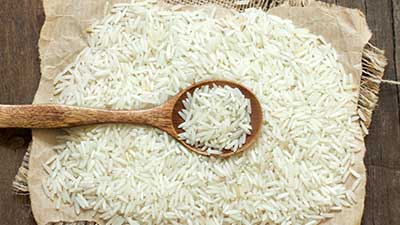Relevance: GS-3: Indian Economy and issues relating to Development, Inclusive growth; Public Distribution System
Relevance: GS-2: Issues relating to the development and management of Social Sector/Services relating to Health, Education, Human Resources Issues relating to poverty and hunger
Key phrases: Targeted Public Distribution System, PM Poshan, ICDS, fortified rice, Food Safety and Standards Authority of India (FSSAI),Food Fortification Initiative.
Why in News ?
- Recently, the government of India has planned to take accelerated steps to distribute fortified rice through the social safety net schemes of Targeted Public Distribution System, PM Poshan and ICDS in all parts of the country by 2024 in a phased manner.
- The first part of this initiative was to implement a pilot scheme, which plans to distribute fortified rice under the Public Distribution System in 15 States (one district per State).
What is food fortification?
- The Food Safety and Standards Authority of India (FSSAI), defines fortification as “deliberately increasing the content of essential micronutrients in a food so as to improve the nutritional quality of food and to provide public health benefit with minimal risk to health”.
- Fortified rice: According to the Food Ministry, fortification of rice is a cost-effective and complementary strategy to increase vitamin and mineral content in diets.
- According to FSSAI norms, fortified rice contains iron, folic acid and Vitamin B-12.
Fortified Rice: An effective solution for India:
- Easy to Implement: Given that rice is the staple cereal for 65 percent of Indians, fortifying rice with micronutrients and supplying it through safety net channels, which cover 800 million people, provides a promising opportunity for plugging the nutritional gaps in dietary requirements of the masses.
- Easy and Cost Effective solution: While achieving dietary diversity should be the ultimate goal, food fortification offers a cost-effective complementary strategy for addressing the problem of undernutrition.
Global Experiences: Fortified Rice can eliminate the termites of Undernutrition
- Mandatory legislation or Welfare Schemes with targeted approach:
- Several countries such as the Philippines, Costa Rica, Nicaragua, Panama, and the US have mandatory legislation for rice fortification,
- While some low and middle-income countries such as Bangladesh, Sri Lanka, Cambodia and India. are taking the route of social safety nets to target the most vulnerable sections of society.
- Fortification is well researched and Empirically proven:
- Various studies provide strong evidence of improvements in nutritional outcomes due to consumption of fortified rice.
- A review, conducted by the Food Fortification Initiative, a significant improvement in malnutrition outcomes.
Case Study of Costa Rica:
- The Costa Rican government ramped up its efforts to mandatorily enrich a wide range of staples, including rice, with micronutrients from late 1990s, in response to the problem of widespread micronutrient deficiency, which was flagged by the national nutritional survey.
- A comparison of 2008-09 and 1996 National Survey data revealed a reduction in prevalence of anemia by 71.2 per cent among children aged 1-6 years and by 46.8 per cent among women of childbearing age.
- Success of the Costa Rican rice fortification programme has also
ascribed to its
- Centralized rice industry
- Leveraging of the existing distribution channels
- Collaborative efforts of private and public sectors
- Ensuring consumer acceptability.
Case Study of Bangladesh:
- A study conducted in Bangladesh examined the effectiveness of fortified rice in reducing the prevalence of anaemia and zinc deficiency among vulnerable women, who were recipients of fortified rice through the government’s Vulnerable Group Development programme.
- Evaluation showed that prevalence of anaemia reduced by 4.8 per cent in the group that received fortified rice whereas it increased by 6.7 per cent in the control group. Zinc deficiency was also reduced by 6 per cent in the group that received fortified rice.
The Indian experience of Food Fortification:
- Several studies have been conducted in India:
- One example is the World Food Programme’s collaboration with the Odisha Government to distribute fortified rice across 1,449 schools in Gajapati district through MDM scheme in 2012.
- ODISHA study: Rayagada(control group) vs Gajapati(fortified group)
comparison:
- Gajapati’s school children experienced a reduction of 20 percentage points in the prevalence of anaemia as opposed to 14 percentage points in Rayagada, indicating a reduction of six percentage points that can be attributed to intake of fortified rice.
- Recent study in Gujarat, published in International Journal of Food
Sciences and Nutrition:
- Evaluated the impact on cognitive performance, haemoglobin concentration and anaemia prevalence in children (6-12 years), who were served fortified rice through the MDM scheme.
- The study found significant improvements in cognitive test scores and haemoglobin concentrations, and reduction in anaemia in the intervention group as compared to the control group.
Way Forward
- While such experiences provide evidence in support of cost-effectiveness
and impact, the success of scaling up fortification to target the country’s
poorest is hinged on various factors:
- Setting up a robust ecosystem
- A well-integrated supply chain
- Establishing standards to ensure consistency in quality
- Strengthening the quality control and quality assurance mechanisms
- Creating awareness to enhance acceptability among consumers
- Monitoring key nutrition indicators
- It is also important to build capacities of stakeholders by incorporating learnings from previous experiences including fortification of salt with iodine and the pilot scheme.
- Further, collaborations with knowledge and implementation partners would help leverage their expertise in implementation and measuring the impacts of the programme.
- These measures would help in ensuring a successful national level scale up of the initiative.
Source: The Hindu BL
Mains Question:
Q. Extreme hidden-hunger prevalence, present a strong case to make food fortification an integral part of the National Food Security Programmes. Discuss how the recent steps taken for rice fortification can help in reducing the prevalence of undernutrition in India.(15 marks).







